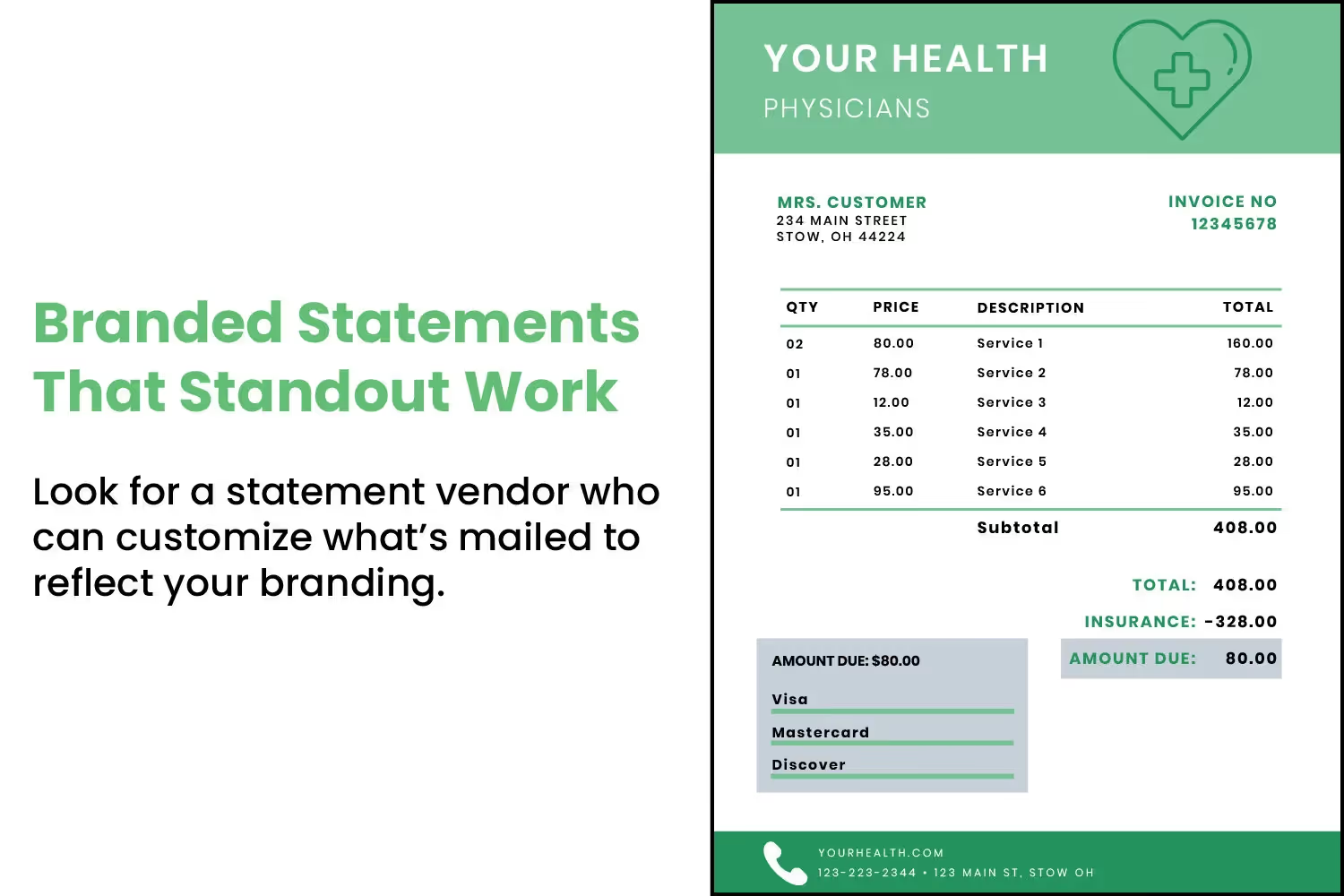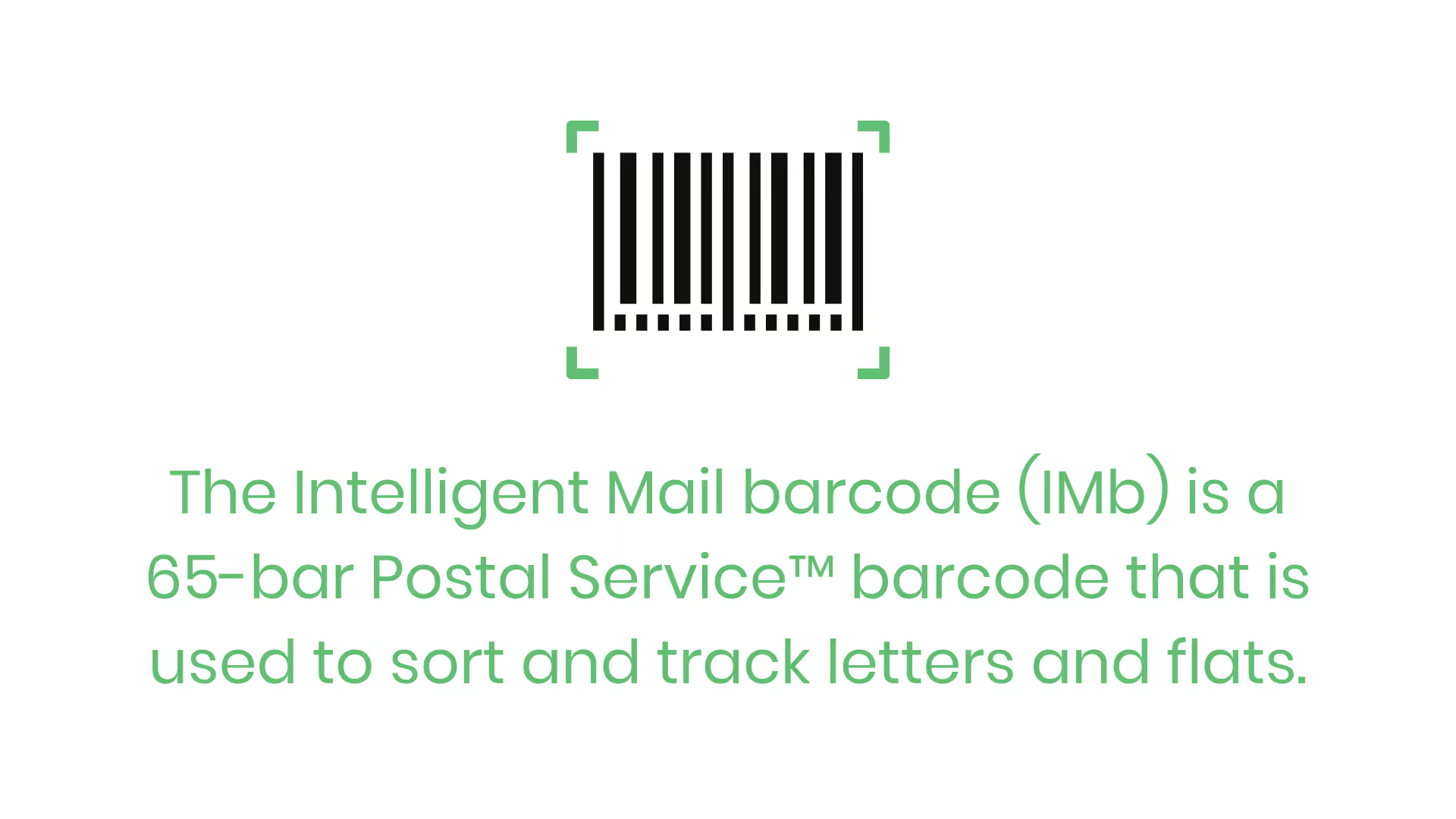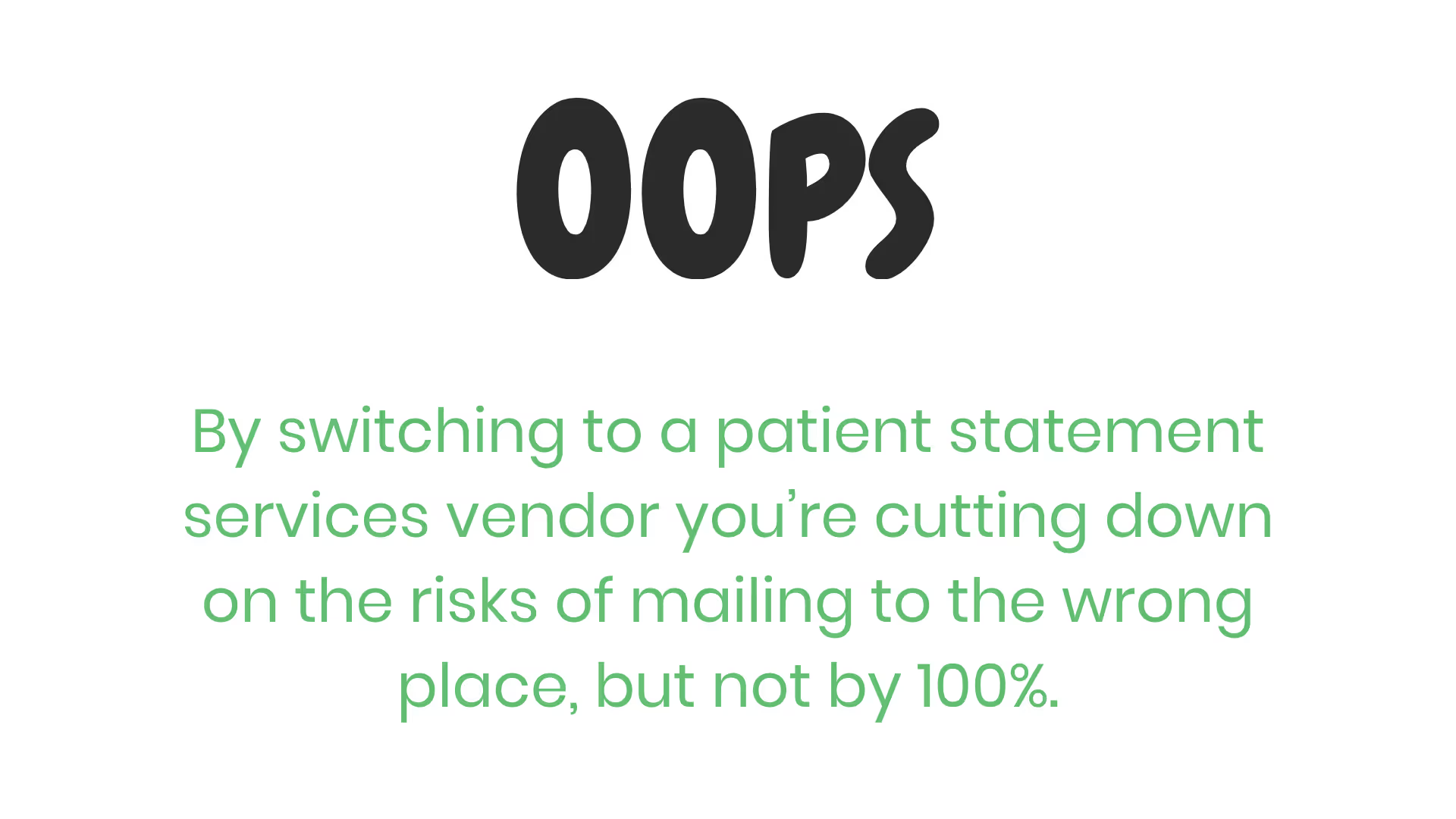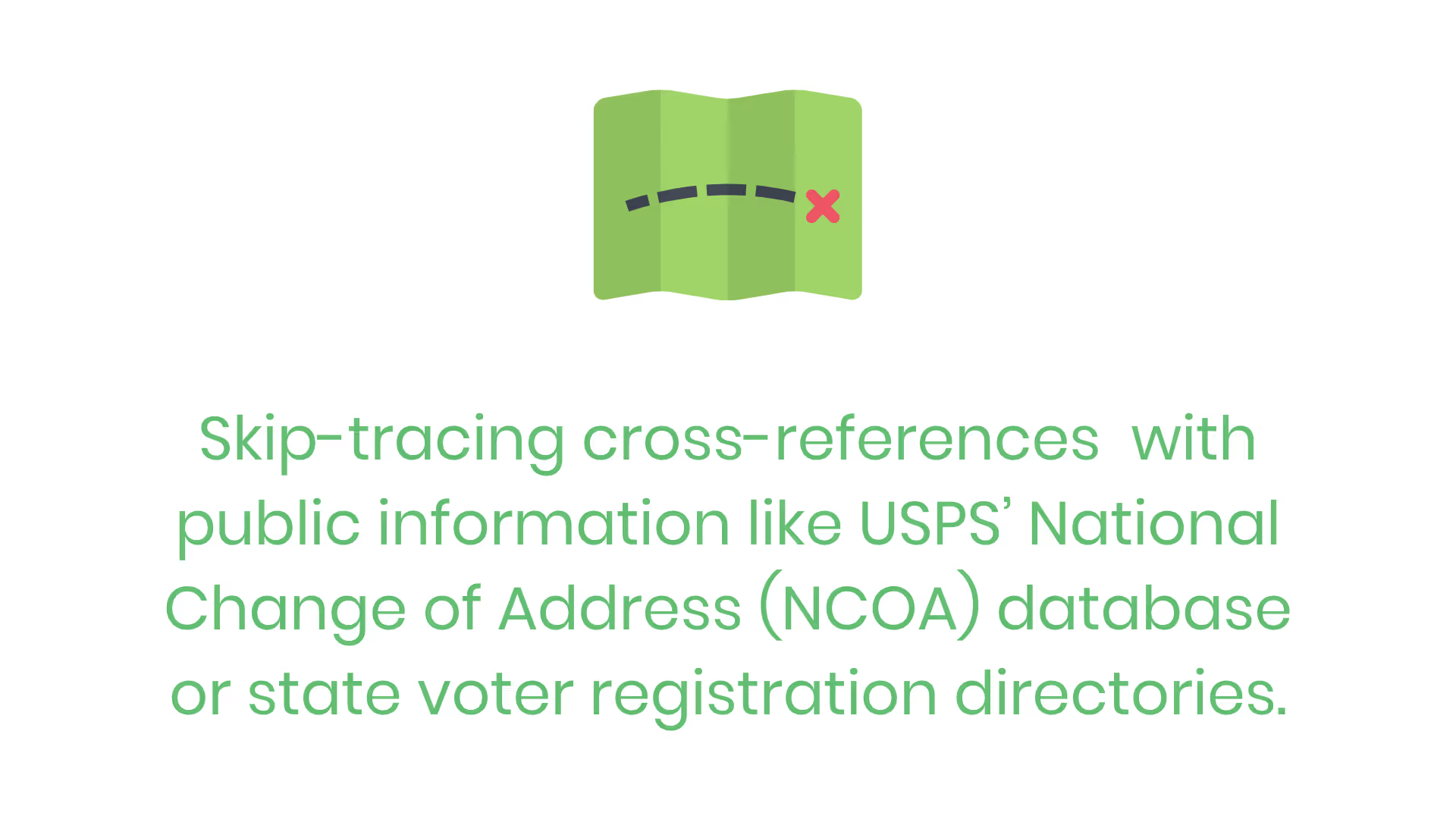The Guide to Evaluating Patient Statement Services
Let’s make the process of evaluating patient statement services easier by cutting out the jargon. Here are the features to look for.

By now we know that it’s worth outsourcing your print and mail services, regardless of the size of your healthcare practice.
The biggest perk you receive in return for outsourcing is that it saves your staff time.
Gaining time is a huge driving factor considering one in four doctors work 60 to 80 hours per week.
So, we now know that the figurative light at the end of the tunnel is having a trusted partner who prints and delivers your invoices to your clients. How do we get there?
Well, the process of finding the right patient statement services isn’t any different than evaluating other vendors that could help your practice. That’s not a surprise.
What isn’t obvious, though, is knowing what features, services and added benefits to look for when you’re meeting with these organizations. This industry is no different when it comes to their sales demonstrations. They’ll throw a bunch of jargon at you throughout in order to sound like their services are better than all of the other vendors out there.
The end result of this is confusion and frustration. You’ve never looked into outsourcing your print and mail services before so how are you supposed to know what a dunning message is?
Let’s make the process of evaluating patient statement services easier by cutting out the jargon. Here are the features to look for.
Statement Customization Capabilities
The most important feature a patient statement service vendor offers is customization.
Let’s face it, when you outsource your delivery process to a business partner you’re losing some control. In other words, you’re not going to have as much say over how everything looks because the vendors have a set amount of templates to choose from.
However, that doesn’t mean you should sacrifice the way your bills look entirely. Yes, you’re saving yourself and your staff time by not having to worry about designing each individual bill.
But, you still want them to reflect your organization’s branding.
If you choose a statement services vendor and what they send to your clients looks mass-produced, your clients will have a hard time realizing that what they received was from you. Thus, you’ll have a harder time collecting.

80% of people read every piece of mail they receive before throwing anything away. But if your vendor sends anything like the above picture on your behalf, you have a problem on your hands.
What would you think if you got a plain piece of mail sent to you saying that you owed hundreds if not thousands of dollars in medical expenses? You’d either call the number listed or think it’s a scam and throw it away.
Either of those options isn’t what you want to have happen to your patients when you send them their bills.
Your patient statement services vendor should have a library of updated, dynamic templates for you to choose from. Once you’ve selected the template you want them to use, they should have the capability of switching out your branding and logo. That way your patients know their bill is from you and it stands out in the pile of mail they go through.

Multiple Delivery Methods
Of course, once you find out the designing capabilities of a potential vendor the next most important aspect to evaluate is their deliverability.
Printing and mailing your bills is an obvious service that each organization you evaluate should have. However, 78% of patients say they would use an online method to access their information from their doctor according to an Intuit Health survey.

When sending bills on your behalf, does the vendor also provide an electronic presentment option? Can they provide your clients with their bills via a secure link sent to their email? Once their bill is ready, do they also have the ability to send the secure viewing link via text?
Sending bills through the mail is still commonplace, but that doesn’t mean your clients don’t have other preferences. 65% of consumers prefer to receive their bills through a combination of both online and paper.

Thus, your patient statement services vendor should provide your clients with multiple delivery methods. More importantly, they should be able to allow your clients to choose.
The same study I linked found that 57% of people would consider switching to an alternative financial organization or service provider if they forced their customers to go paperless. In other words, your business partner should offer options and not force your customers into accepting a particular delivery method over the other.
Tracking and Status Updates
OK, so let’s say the vendor you’re evaluating offers adequate customization capabilities and delivery options. Let’s say you went with this organization without doing and further digging.
At this point you’re integrated with them, the first of the month rolls around and everything gets sent out no problem.
A couple of weeks go by, though, and you haven’t received any payments from the state of Florida. Confused, you call the United States Postal Service (USPS) because you know that’s where your new business partner goes to deliver your mail.
After waiting on hold for thirty minutes, the USPS representative tells you that there’s no tracking information because they don’t have an Intelligent Mail barcode (IMb) on them.

In other words, you spent all this time working with your new vendor to integrate and design your bills but you can’t predict your revenues because of a lack of tracking capabilities.
The best patient statement service providers are those that not only places unique IMb codes on each bill that gets sent, but also provides that tracking information back to your staff for review.
When you have real-time tracking and status updates on hand you’ll be able to accurately predict your incoming revenues.
Address Correction and Skip-Tracing
Since you’ve printed and mailed your statements in-house all this time you know that sometimes addressing them is hard.
What seems so simple ultimately isn’t. Sending mail to the correct address requires accuracy and up-to-date information. Manually writing or entering addresses onto envelopes opens up the potential for many mistakes along the way.
Maybe…
- The patient wrote their address wrong on their insurance form after their appointment
- Your staff went off of the patient’s ID on file and they’ve since moved
- An employee misspelled the address when entering it into your system
- The envelope had the wrong address written on it
There are thousands of silly mistakes that could happen to your patients’ addresses before you’ve even sent it. Many of these simply can’t happen when considering how important these documents are to your practice.
Switching to a patient statement services vendor cuts down on the risks of mailing to the wrong place, but not by 100%.

Sure your team no longer has to worry about physically addressing the envelope incorrectly as your vendor takes on that responsibility. However, that doesn’t mean you’ll never get returned statements again.
Each month your vendor will still require a list of information from your staff in order to create and mail your patients’ bills. You guessed it, addresses are a list item within the data that they’ll need from you.
Thus, typos are still bound to happen during the entering process. This is avoidable through address correction and skip-tracing.
Address correction and skip-tracing adds an additional step to the mailing process that checks and corrects locational data. At its most rudimentary stage, it checks for misspellings and formatting errors.
Skip-tracing, though, cross-references what’s on file with massive amounts of public information like USPS’ National Change of Address (NCOA) database or state voter registration directories. It then points out any potential discrepancies and allows your staff to change where your bills get sent, improving accuracy.

Inserts and Marketing Capabilities
Today’s healthcare experience requires that you constantly stay in touch with your clients.
This is a large part of providing a great patient experience.
Sure, you can stay in contact with them through social media messages, likes, and shares. However, it’s possible that they’ll still miss the content you want to spread even though you’re using these platforms.
Maybe they don’t follow your practice’s page or they weren’t online at the same time your update went out. Regardless of the reason, it’s a shame when this sort of thing happens.
But staying in contact isn’t limited to social media, appointment reminders, or newsletters.
You can piggyback communication with any form of reaching out to your clients. This point leads us into the next key feature to look for, inserts and marketing capabilities.

The best of these service providers realize the communication opportunity that presents itself when mailing bills. At their longest, statements themselves are only about 3 pages.
This leaves a lot of room in the envelope for additional information.
Let’s say that a new doctor joined your practice and you want to announce them to your clients. Well, you should have the capability to request an insert with your new service provider that introduces the new doctor to your existing clients.
This way you’re accomplishing to things. First, you’re reminding them why they chose your practice with the communicative insert. Second, they receive important information regarding their balance.
Conclusion
Finding a new vendor isn’t an easy task. Regardless of what service you’re looking for, there’s a lot of organizations out there that achieve what you’re asking.
Thus, it’s easy to get caught up in the jargon and “value” these organization’s salespeople ramble on about.
But, in order to find the right patient statement services vendor for your organization, you’ll need to see past all of the marketing mumbo-jumbo and know the key features to look for.
Hopefully, this blog post gives you some insight as to what to look for and ask questions about. Switching away from in-house printing and mailing might seem like it’s more work than it’s worth, but it’s only the beginning stages that take the most effort. Using this guide will make the beginning phases way easier.
Emphasize your product's unique features or benefits to differentiate it from competitors
In nec dictum adipiscing pharetra enim etiam scelerisque dolor purus ipsum egestas cursus vulputate arcu egestas ut eu sed mollis consectetur mattis pharetra curabitur et maecenas in mattis fames consectetur ipsum quis risus mauris aliquam ornare nisl purus at ipsum nulla accumsan consectetur vestibulum suspendisse aliquam condimentum scelerisque lacinia pellentesque vestibulum condimentum turpis ligula pharetra dictum sapien facilisis sapien at sagittis et cursus congue.
- Pharetra curabitur et maecenas in mattis fames consectetur ipsum quis risus.
- Justo urna nisi auctor consequat consectetur dolor lectus blandit.
- Eget egestas volutpat lacinia vestibulum vitae mattis hendrerit.
- Ornare elit odio tellus orci bibendum dictum id sem congue enim amet diam.
Incorporate statistics or specific numbers to highlight the effectiveness or popularity of your offering
Convallis pellentesque ullamcorper sapien sed tristique fermentum proin amet quam tincidunt feugiat vitae neque quisque odio ut pellentesque ac mauris eget lectus. Pretium arcu turpis lacus sapien sit at eu sapien duis magna nunc nibh nam non ut nibh ultrices ultrices elementum egestas enim nisl sed cursus pellentesque sit dignissim enim euismod sit et convallis sed pelis viverra quam at nisl sit pharetra enim nisl nec vestibulum posuere in volutpat sed blandit neque risus.

Use time-sensitive language to encourage immediate action, such as "Limited Time Offer
Feugiat vitae neque quisque odio ut pellentesque ac mauris eget lectus. Pretium arcu turpis lacus sapien sit at eu sapien duis magna nunc nibh nam non ut nibh ultrices ultrices elementum egestas enim nisl sed cursus pellentesque sit dignissim enim euismod sit et convallis sed pelis viverra quam at nisl sit pharetra enim nisl nec vestibulum posuere in volutpat sed blandit neque risus.
- Pharetra curabitur et maecenas in mattis fames consectetur ipsum quis risus.
- Justo urna nisi auctor consequat consectetur dolor lectus blandit.
- Eget egestas volutpat lacinia vestibulum vitae mattis hendrerit.
- Ornare elit odio tellus orci bibendum dictum id sem congue enim amet diam.
Address customer pain points directly by showing how your product solves their problems
Feugiat vitae neque quisque odio ut pellentesque ac mauris eget lectus. Pretium arcu turpis lacus sapien sit at eu sapien duis magna nunc nibh nam non ut nibh ultrices ultrices elementum egestas enim nisl sed cursus pellentesque sit dignissim enim euismod sit et convallis sed pelis viverra quam at nisl sit pharetra enim nisl nec vestibulum posuere in volutpat sed blandit neque risus.
Vel etiam vel amet aenean eget in habitasse nunc duis tellus sem turpis risus aliquam ac volutpat tellus eu faucibus ullamcorper.
Tailor titles to your ideal customer segment using phrases like "Designed for Busy Professionals
Sed pretium id nibh id sit felis vitae volutpat volutpat adipiscing at sodales neque lectus mi phasellus commodo at elit suspendisse ornare faucibus lectus purus viverra in nec aliquet commodo et sed sed nisi tempor mi pellentesque arcu viverra pretium duis enim vulputate dignissim etiam ultrices vitae neque urna proin nibh diam turpis augue lacus.



![[ANSWERED] What is a Long-Term Care (LTC) Pharmacy](https://cdn.prod.website-files.com/67e2b8210878abcba6f91ae6/68d687806a075a1cf64659b0_WhatisLongTermCarePharmacy_925.avif)
